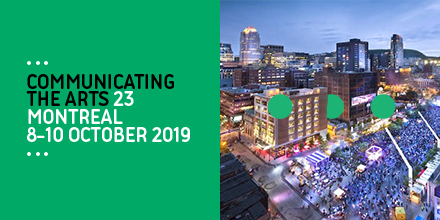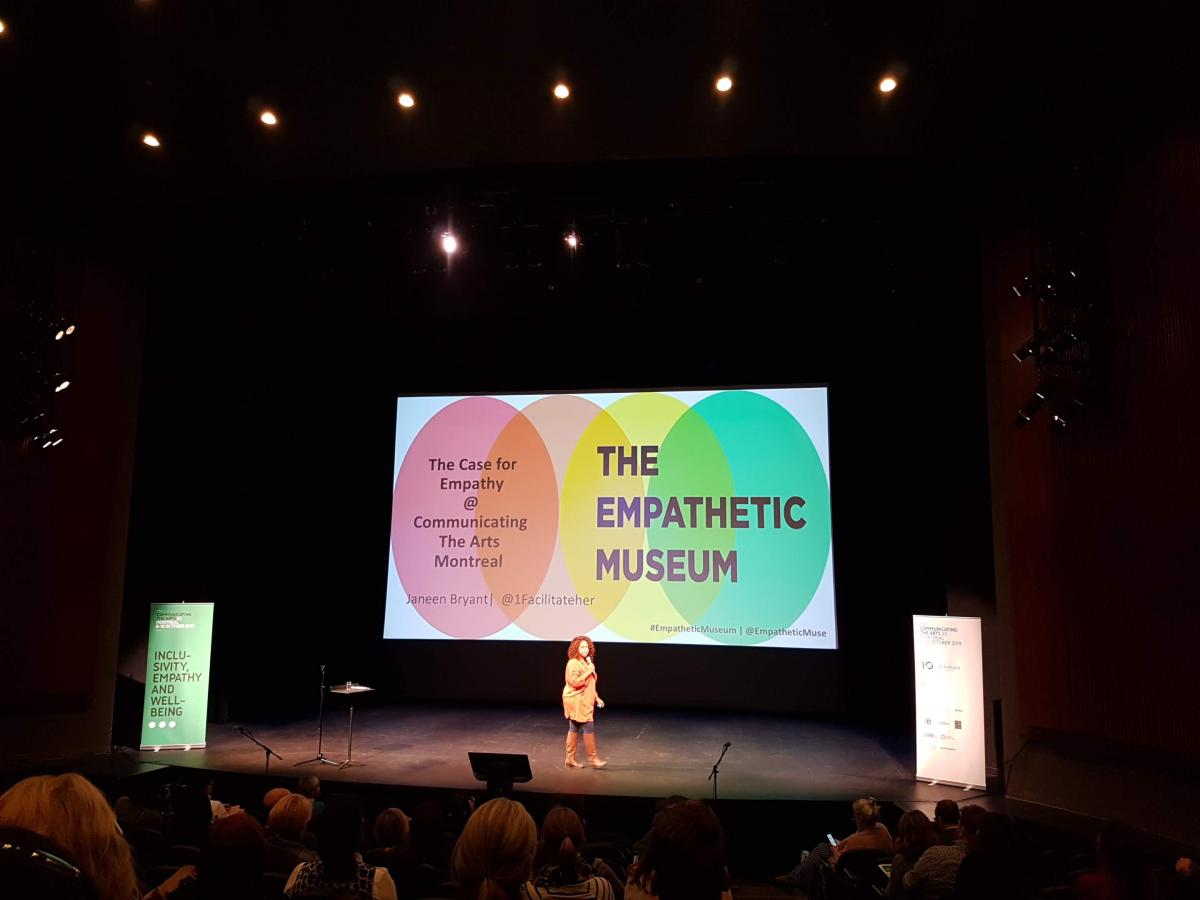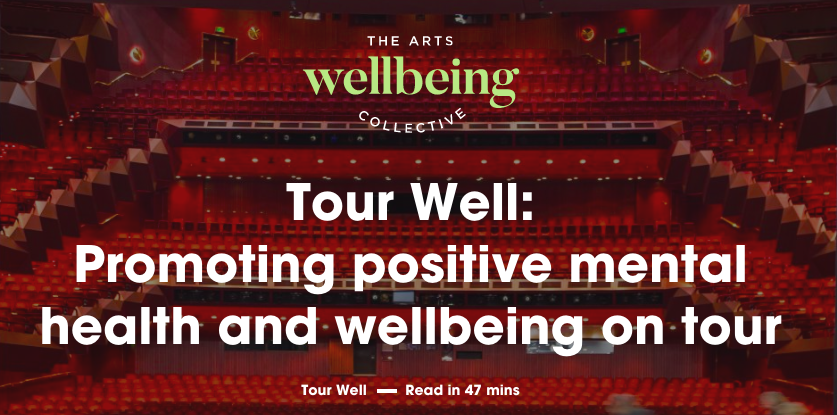December 2, 2019
This post was written by Ontario Presents’ Communications and Membership Services Coordinator Natalie Dewan.

This past October, I attended the Communicating the Arts conference in Montreal. Communicating the Arts is an international conference for cultural leaders. Formerly focused on museums, the conference has recently expanded to the wider cultural sector, providing a unique opportunity for knowledge-sharing across the often-siloed fields of museums, galleries, and performing arts organizations.
The Montreal edition of CTA was focused on Empathy, Inclusivity, and Well-Being – important and timely topics for our sector. As articulated in our new Statement of Purpose, Ontario Presents as a network is constantly working “to strengthen and support the practice of performing arts presentation so that it becomes more collaborative, artist-focused, and meaningful to communities.” Along with our colleagues across the cultural sector, we are all working together to determine how our organizations can be healthier, more inclusive spaces that play a vital role in the betterment of our communities.
To that end, I wanted to share some of the lessons, examples, and resources that I picked up at the conference! Scroll down for links to all of the resources mentioned in this post.
Museums and Performing Arts: We’re not so different!
One of my biggest take-aways from the conference is that museums and galleries are having a lot of the same challenges and discussions as performing arts organizations, but are not often in conversation  with each other. This is a missed opportunity.
with each other. This is a missed opportunity.
For example, many cultural organizations are facing the challenge of opening our doors and making everyone feel welcome, while also grappling with time constraints, financial limitations, and community perception. Cultural organizations are, in many cases, hierarchical organizations based in a top-down, Western pedagogical mindset that is inherently at odds with the goal of making everyone feel welcome. Museums and performing arts alike are struggling to change perceptions of and within their organizations.
As you’ll see form the following examples and resources – we can learn a lot from each other!
We can’t help others if we don’t help ourselves
#2 on my list of ah-ha moments was the strong interconnectedness of empathy, inclusivity, and well-being.
First of all, we in the arts know that culture is beneficial for everyone’s well-being. This revelation is now starting to bear out in scientific research, reinforcing the importance of opening our doors and working hard to ensure that everyone has the opportunity to participate in arts and cultural experiences.
For example, you probably know that the Montreal Museum of Fine Arts has partnered with doctors to create an innovative program that allows doctors to prescribe a visit to the museum. While the results of this initiative are still being analyzed, studies so far support culture as an objectively beneficial experience for patient well-being. CEO of the Montreal Museum of Fine Arts Nathalie Bondhil is convinced that just as society gradually accepted that sport is important to physical health and development, culture will grow to be accepted as vital to our personal and community well-being. This in turn will lend additional importance to the need for all people to have access to meaningful cultural experiences.
Click here to learn more about social prescribing in Ontario and beyond.
Beyond the importance of culture for our audience’s health, we need to take care of our own health. We in the arts (whether we are administrators, managers, crew members, artists, or more) often work long, unpredictable hours, face the pressure of absolute showtimes and financial risk, and neglect our own health for the benefit of our shows, organizations, or communities. This is unsustainable. We cannot help others if we don’t take care of ourselves.
I was thrilled to hear a talk by Claire Spencer of Arts Centre Melbourne on an initiative called the Arts and Well-Being Collective. The collective spans the entire performing arts sector in the state of Victoria,
Australia – from front of house staff, to administrators, to artists and crew. The Collective raises awareness of the importance of mental and physical health, allows for open and honest dialogue about unhealthy practices in the sector, and provides much needed resources.
Many of these resources are freely available online – check them out here. Of particular interest to the touring sector is the Tour Well resource for mental health on the road!
(PS – OP and APA hosted a webinar on staff well-being last year – check out the resources from that webinar here).
Becoming an Empathetic Organization
I hope that we all consider ourselves to be empathetic individuals, but before this conference I had not considered the concept of an empathetic organization or institution. Community engagement specialist Janeen Bryant spoke about the idea of The Empathetic Museum. The concept is supported by a group of museum professionals who “value and advocate for diversity of thought and authentic integration of empathy in museum practice.”
So what does it mean for an organization to be empathetic? Janeen gave many valuable examples of how an institution can shift from taking small steps to attempt to involve community and create greater equity, to a radically empathetic approach that embeds empathy into everything the organization does.
 For example, she spoke about a museum in North Carolina that had a large photo featuring the KKK outside of their museum. From their perspective, they were acknowledging and confronting the sometimes-painful history of their community. But for many in the African American community, the photo suggested that they were not welcome in the museum. Many even referred to it as “The KKK Museum.” The museum was stuck in its pedagogical worldview and refused to empathetically listen and respond to this community perception.
For example, she spoke about a museum in North Carolina that had a large photo featuring the KKK outside of their museum. From their perspective, they were acknowledging and confronting the sometimes-painful history of their community. But for many in the African American community, the photo suggested that they were not welcome in the museum. Many even referred to it as “The KKK Museum.” The museum was stuck in its pedagogical worldview and refused to empathetically listen and respond to this community perception.
Another example was Superstorm Sandy, during which The New York Public Library opened its doors and allowed people to rest, charge phones, and have a safe place to rest. The city’s museums did not do the same. For those of us who run venues, how can we accept our role as public space and be prepared to respond to community need as it arises?
Central to this idea of empathy is a willingness to share power. Examples of the importance of sharing power came up again and again throughout the conference
For example, Helen Anu from the Australian National Maritime Museum spoke about the process of developing the Gapu-Monuk Saltwater exhibition. This exhibition featured sacred paintings created by Yolŋu artists from fifteen clans and eighteen homeland communities in North-East Arnhem Land. The paintings played an essential role in a landmark court case that resolved in 2008 and granted the traditional owners of the Blue Mud Bay region exclusive access rights to tidal waters overlying Aboriginal land. Helen spoke of the process of setting up this exhibit, and the absolutely essential importance of working with the Yolŋu and the communities involved in this story. Helen and her team took four years to work with the communities, build relationships, and ensure that Indigenous language, stories, and worldview were included in every step of the development process.
If you want to hear more about this exhibition, you can listen to an interview with Helen Anu here.
Each of these examples highlights that if we ever hope to move away from the perception of culture as elite and move towards empathetic, welcoming, equitable spaces that allow everyone to experience culture, it is essential that we be willing to listen to our communities, respond to community needs, take care of each other, and share power.
Resources
Below are a few resources that I learned about through the conference. While some were developed with museums in mind, they are useful for any cultural organization. As I said, we’re not so different.
If you have questions about any of this or are interested in learning more, please don’t hesitate to reach out at natalie@ontariopresents.ca or 416 703 6709 ext 5.
We will also be working on weaving these lessons and resources into our community engagement resource ArtsEngageCanada. So I encourage you to watch that space and sign up for the ArtsEngageCanada newsletter.
Mentioned in this blog post:
Arts and Well-Being Collective
OP/APA Webinar on Self-care for Presenters
Gapu-Monuk Saltwater Exhibition
Other valuable resources:
OECD/ICOM Study – Culture and Local Development – While designed for museums, this is a useful guide to maximising the social value of all culture in communities.
Museums & Race – Project to challenge systems that perpetuate oppression in museums.
MASS Action (Museum as Site for Social Action) Toolkit – Toolkit designed to support cultural workers in responding to social justice issues.
Cooper Hewitt Accessibility Page – Example of a thorough accessibility page.
CTA Montreal Conference Key Learnings
Porch Light Study on public art and public health
Museum Commons – Space for broad discussions about museums, social justice, and other topics (connected to The Empathetic Museum).


